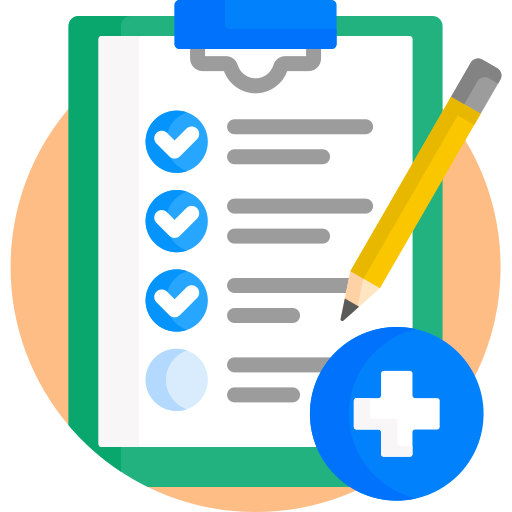Need Help ? Call 06292253004 !!
📍 Detecting...
Select Location
Audiometry Procedure
Audiometry test is a simple and painless hearing test that helps assess how well you can hear different sounds. The test measures your ability to hear sounds across different frequencies.
₹1440 (₹1600)
CLINICA DIAGNOSTICS - BARASAT
Address: Noapara Bazar, Krishnanagar Road, Kolkata 700124
CLINICA DIAGNOSTICS - CHAKDAHA
Address: 815 Singher Bagan Road, Joykrishnapur, Chakdah, Nadia - 741222
About Audiometry Procedure :
What is Audiometry Procedure?
Audiometry is a non-invasive procedure used to assess an individual's hearing sensitivity and identify potential hearing disorders. It is a series of tests that measure the range and sensitivity of a person's hearing, evaluating their ability to detect sounds of different frequencies and volumes. During the procedure, the patient is seated in a sound-treated room or booth and wears headphones or earphones. The audiologist explains the test procedures and asks the patient to respond to sounds of different frequencies and volumes. The patient may also be asked to repeat words or sentences to assess speech understanding. Additionally, tympanometry may be performed to assess middle ear function and mobility of the eardrum. The results of the audiometry procedure can help diagnose various hearing disorders, such as hearing loss, middle ear problems, or inner ear problems. The results can also determine the degree and type of hearing loss, informing treatment options like hearing aids or medical interventions. Overall, audiometry is a valuable diagnostic tool for evaluating hearing function and identifying potential hearing-related issues. It is a crucial step in maintaining ear health and addressing hearing-related problems. By assessing hearing sensitivity, audiometry helps healthcare professionals develop effective treatment plans.
What is the process of Audiometry Procedure?
The Audiometry Procedure is a comprehensive hearing test used to assess an individual's hearing threshold levels and identify any hearing disorders. Here's the step-by-step process:
Preparation:
1. Patient preparation: The patient is seated comfortably in a quiet room.
2. Ear canal cleaning: The ear canal is cleaned to remove any wax or debris.
Pure Tone Audiometry (PTA):
1. Headphones placement: The patient is fitted with headphones to listen to sounds.
2. Sound presentation: Sounds of varying frequencies and intensities are presented to the patient through the headphones.
3. Response: The patient is asked to respond when they hear a sound.
4. Threshold determination: The minimum sound intensity that the patient can hear is determined.
Speech Audiometry:
1. Speech presentation: Speech sounds, such as words or sentences, are presented to the patient through the headphones.
2. Response: The patient is asked to repeat the words or sentences.
3. Speech threshold determination: The minimum sound intensity that the patient can understand speech is determined.
Additional Tests:
1. Bone Conduction Testing: Sounds are presented through a bone conduction device to assess the patient's inner ear function.
2. Tympanometry: Measures the movement of the eardrum and the reflexes of the middle ear muscles.
3. Acoustic Reflex Testing: Measures the reflexes of the middle ear muscles in response to sound.
Results and Interpretation:
1. Audiogram creation: The results are plotted on an audiogram, which shows the patient's hearing threshold levels.
2. Interpretation: The audiologist or hearing specialist interprets the results to diagnose any hearing disorders or abnormalities.
The entire procedure typically takes around 30-60 minutes. The Audiometry Procedure is a comprehensive assessment of an individual's hearing ability and is used to diagnose and manage various hearing disorders.
What is Audiometry Procedure used for?
1. The Audiometry Procedure is a series of tests used to assess an individual's hearing ability. The procedure typically involves the following steps:
2. Otoscopy is a visual examination of the ear canal and eardrum to check for any blockages or abnormalities.
3. Pure Tone Audiometry involves the individual being seated in a soundproof room and wearing headphones. Sounds of different frequencies and volumes are played through the headphones, and the individual is asked to respond when they hear a sound.
4. Speech Audiometry involves the individual being asked to repeat words or sentences that are spoken to them through headphones. This test assesses their ability to understand speech.
5. Bone Conduction Testing involves a small device being placed on the individual's forehead, and sounds are transmitted through the bone. This test assesses the individual's inner ear function.
6. Tympanometry involves a small probe being inserted into the ear canal to assess the middle ear function.
7. Acoustic Reflex Testing involves a small device being used to assess the reflexes of the middle ear muscles.
8. The results of the audiometry procedure are plotted on an audiogram, which shows the individual's hearing thresholds at different frequencies. This information is used to diagnose and manage hearing-related problems.
Chat with us!
.png)


 91-6292253005
91-6292253005




